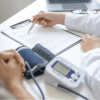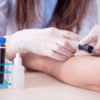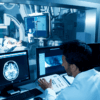Introduction to the Article:
Heart disease and stroke are the two most common causes of death worldwide. It’s important to understand the signs and symptoms of heart disease and stroke so you can quickly get help. This blog will give you an overview of heart disease, Stroke, its causes, and prevention.
In this detailed guide, we will be discussing:
- A little about Heart disease and Stroke
- What is a Heart attack?
- What is a Stroke?
- Causes of Heart attack and Stroke
- How to reduce the risk of developing Heart attack and Stroke
- Tips to reduce the risk of Heart attack and Stroke.
- Treatment of Heart attack and Stroke
- Conclusion
Heart Disease and Stroke:
Heart disease and stroke are two of the most common diseases worldwide. They have unbelievable rates, and you can be yourself and still develop heart disease or Stroke. It’s not just a brand or product that has a risk of developing heart disease or stroke, but also your lifestyle. Control your eating and drinking, take regular breaks, and avoid high-intense activities all need to be done if you want to stay healthy.
What is a Heart attack?
A heart attack is a medical emergency in which the blood supply to the heart is suddenly blocked, usually by a clot in one of the coronary arteries. This can cause the heart muscle to become damaged or even die. Heart attacks are the leading cause of death globally and can happen to anyone at any age.
A heart attack is a condition that is caused by the myocardium (a layer of the heart), Atherosclerosis (a condition that is caused by the atheroma (a piece of skin), or by a blockage in the aorta (a long tube that carries oxygen and carbon dioxide from the blood to the body).
Symptoms:
Symptoms of a heart attack may include chest pain, shortness of breath, sweating, and an irregular heartbeat.
What is a Stroke?
A stroke occurs when the blood supply to the brain is cut off, depriving the brain of oxygen. This can happen if a clot blocks a blood vessel or if it bursts. A stroke is a medical emergency and can cause permanent disability or even death.
A stroke is a sudden, unexpected stop in the blood flow to the brain. This stop in flow can be caused by several things, such as high blood sugar, an unhealthy meal, or too much caffeine. It’s often preventable, and the best way to avoid it is to reduce the amount of caffeine in your diet.
A stroke is one of the most common medical events, and it’s important to know the risks and how to protect yourself. All lives are important. To avoid dying early in our age, we should try to live a happy life.
Symptoms:
Symptoms of Stroke include:
- Sudden weakness or numbness in the face, arms, or legs.
- Sudden confusion or trouble speaking.
- Sudden trouble seeing from one or both eyes.
Heart disease and stroke stats globally and in Pakistan:
Heart disease and stroke are the leading causes of death worldwide. In Pakistan, heart disease and Stroke are responsible for about one in every four deaths. The number of people dying from heart disease and Stroke is increasing yearly.
According to the World Health Organization (WHO), cardiovascular disease is the leading cause of death globally, accounting for 17.3 million deaths annually. This figure is expected to rise to 23.6 million by 2030. In Pakistan, cardiovascular disease is responsible for an estimated 35% of all deaths, with an estimated 1.2 million people dying from the condition each year. This figure is expected to rise to 1.5 million by 2030. Stroke is the third leading cause of death in Pakistan, accounting for an estimated 5% of all deaths. The WHO estimates that globally, there will be 23.6 million deaths from cardiovascular disease in 2030, with Pakistan accounting for 1.5 million of these.
Read More: Diabetes
Causes of Heart Attack and Stroke: –
A heart attack can be caused by Coronary thrombosis.
Coronary thrombosis is the formation of a blood clot within the coronary arteries. This can lead to a heart attack, as the clot can block blood flow to the heart muscle. Coronary thrombosis is often caused by atherosclerosis, where the arteries become narrowed and blocked by plaques made up of fatty deposits.
Many factors can lead to heart disease and Stroke, including a high level of daily caloric intake, not being able to eat healthy foods, not getting enough exercise, and smoking.
High blood pressure: When high blood pressure reaches a certain point, it can lead to heart disease and Stroke.
Obesity: Obesity is a condition where the body doesn’t or can’t produce enough body weight. The limitations of our diet make it difficult for us to stay healthy. We must be aware of the foods we eat and how they will affect our body weight.
Myocardial infarction: In some cases, a heart attack may be caused by a sudden, severe, and potentially life-threatening condition called a myocardial infarction.
Other causes of a heart attack include heart failure, valve problems, and abnormal heart rhythms. This occurs when the heart muscle is deprived of oxygen and begins to die. Heart attacks are caused by various factors, including genetics, lifestyle, and health conditions.
Other risk factors include high blood pressure, diabetes, smoking, and family history.
Read More: What is Cholesterol?
How to Reduce the Risk of developing heart disease or Stroke?
There are steps that everyone can take to reduce their risk. Eating a healthy diet, exercising regularly, and managing stress are all important for maintaining a healthy heart. Additionally, quitting smoking and avoiding excessive alcohol consumption can also help to reduce the risk of a heart attack.
Some lifestyle changes can help reduce your risk of developing heart disease or Stroke. These changes include reducing caffeine consumption, eating a light and nutritious diet, avoiding high-intensity activities, and maintaining good personal hygiene. However, the most important thing you can do is get plenty of rest. You’ll need it when you’re going through some big life changes.
Take Control of Your Eating and Drinking Routine:
If you want to stay healthy, you need to take control of your eating and drinking routine. This will help you avoid dangerous combination meal plans and unhealthy eating habits. Try eating healthy food and including vitamins and minerals in your diet plan. Try to drink plenty of water. You also have to get more sleep and reduce your risk of developing heart disease or Stroke.
Tips to reduce the risk of heart disease: –
- Eat a healthy diet: A healthy diet includes foods like fruits, vegetables, and whole grains. When you’re eating a healthy diet, your blood pressure will be lower, and your heart disease risk will be less.
- Exercise: Exercise is one of the most important things you can do for your heart health. Exercise can reduce the risk of heart disease by lowering the risk of other diseases, such as cancer.
- Drink plenty of fluids: Drinking plenty of fluids can help control your body’s temperature and allow you to feel more relaxed and comfortable.
- Read your health records: Before you can even think about practising sports or a fitness program, you need to have your health records to ensure you’re following the right risks and benefits while playing or working out.
- Get more sleep: Getting enough sleep also helps to reduce the risk of heart disease.
Treatment of Heart disease and Stroke:
Treatment focuses on preventing the clot from forming or breaking up if it has already formed. This may include medications, surgery, or angioplasty.
Conclusion:
Heart disease and Stroke are potentially life-threatening illnesses. With this knowledge, you can make the most of your health and prevent some of your biggest pitfalls regarding heart disease and Stroke. Take some of our advice and put it into action in your life! Thank you for reading; we are always excited when one of our posts can provide useful information on a topic like this.
Read More: Annual Medical Check-up










